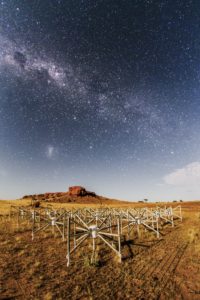Things were mostly peaceful last month, which results in this extra short post. The James Webb space telescope successfully unfolded and pulled itself together; it also reached its nesting point, where it will be tugged along by Earth’s gravity from now on. And, astrophysicists found a weird radiowave signal coming from not too far from us in space. (It’s not aliens.)

Many kinds of celestial bodies emit radiowaves, but this time the signal was repeating at the unusual periodicity of around three times per hour and lasting around one minute. This doesn’t match the behaviour of any known sources (e.g. quasars or neutron stars). Combined with a very stong intensity, it makes things perplexing. Add the fact that the signal is very polarized, i.e. rotated along a specific direction, which probably means that it came from some place with a strong magnetic field. All these features taken together conspire to make a small mystery.
The pulses were caught on tape by the Murchison Widefield Array of telescopes in Australia over three months in 2018, and they come from something approximately 4,000 light years away (yes, this is the “not too far from us” part; for context, the diameter of the Milky Way is 100,000 light years). The signal was discovered in the data only a couple of years later, which means that the chance to look at it with other telescopes in real time was lost. Now it can be expected that people will comb more existing data to see if there are other such radio stations of the sky.

😃